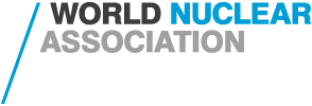Confidence gained through performance improvements and talks with ten Japanese nuclear utilities means the Sellafield MOX Plant (SMP) will continue to operate 'in the longer term.'
.jpg) |
| Inside the Dry Laboratory at Sellafield MOX Plant (Image: INS) |
After work by the NDA's commercial subsidiary, International Nuclear Services, new arrangements are in place that the NDA said "make the continuing operation of the plant economically acceptable in the longer term." Business planning manager John Clarke added that, "Agreement has now been reached between the NDA and Japanese utilities on an overall framework for future fabrication of MOX fuel in SMP."
The NDA has asked Sellafield managers, the Nuclear Management Partners (a consortium of Washington International Holdings, Amec and Areva), to make the improvements to performance "on the earliest timescale" to be ready to begin a new Japanese job as quickly as possible after current work is completed.
The decision to continue operations at SMP comes after an October 2009 statement that only covered the completion of the job underway at the time - eight assemblies for a German customer. NDA noted the improvement in throughput at the plant but said it must try to get the best value for money for UK taxpayers, who ultimately own the facility.
SMP creates mixed-oxide nuclear fuel by combining uranium oxide with plutonium oxide recovered from the reprocessing of used nuclear fuel. This is in demand in Japan, which wants to extend the use of imported uranium by reprocessing and then recycling materials in this way. Japanese fuel is reprocessed at Sellafield's Thermal Oxide Reprocessing Plant (Thorp) before the plutonium is transferred to SMP.
SMP is one of only two commercial MOX fuel manufacturing plants in the world, the other being Melox at La Hague in France. One called J-MOX is approved for build in Japan, and construction is underway on another at Savannah River in the USA but this is for the destruction of plutonium from former weapons stocks. Small facilities operate at Tokai in Japan and Marak in Russia.
£1.5 billion for Sellafield
Meanwhile, the NDA has also announced its funding package for Sellafield this year - some £1.5 billion out of its £2.8 billion budget ($2.2 billion of $4.1 billion). As the biggest nuclear site in the UK and one of the largest and most complex in the world, Sellafield is a major priority for the NDA in its work to manage and dismantle old parts of the UK's former state nuclear program.
The NDA has been told by Sellafield Ltd that it has begun talking to staff about plans to "defer some lower priority work in order to focus on high hazard reduction and on their plans to generate greater efficiency across the site."
Commercial activities such as reprocessing at Thorp and SMP have a notable role for the NDA, which passes profits to the UK government before receiving a larger grant-in-aid to carry out its work. The better commercial performance the NDA can gain from SMP, Thorp and the remaining Magnox reactors, the better is the overall value for the UK.
In this regard, the NDA also celebrated good generation figures from the four operating power reactors it owns at Wylfa and Oldbury which together with a small hydro plant generated a record 8 TWh of electricity last year.
Researched and written
by World Nuclear News




_18938.jpg)
_33584.jpg)
_82983.jpg)
_49382.jpg)





